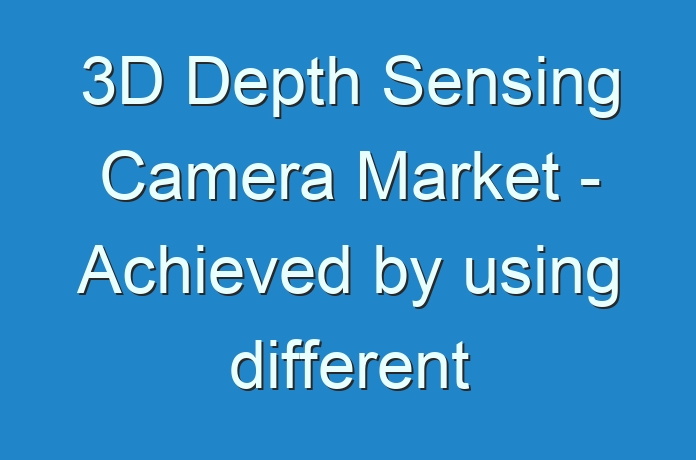
3D Depth Sensing Camera: Introduction
- 3D depth sensing is the ability to create an image which has full depth information of the object at each location in the image.
- 3D depth sensing is a depth sensing technology that uses camera capabilities for facial and object recognition. It is the process of capturing a real-world object’s length, width, and height with more clarity and in-depth detail, achieved by using different technologies such as artificial intelligence (AI) and Internet of Things (IoT).
- 3D depth sensing cameras that can scan and capture objects in 3D are now a standard feature in many smartphones, drones, robots, and automobiles. When these 3D depth sensing cameras are paired with the right software, they can even sense the light levels, movements, and textures in more places and at a lower cost.
Want to know the obstructions to your company’s growth in future? Request a brochure @ https://www.transparencymarketresearch.com/sample/sample.php?flag=S&rep_id=68030
Growth of the Global 3D Depth Sensing Camera Market
- 3D depth sensing cameras are popular in smartphone photography in which lighting filters and effects such as Bokeh effect can be added, or avatars and animated emoji’s created by using someone’s facial features. A 3D depth sensing camera can take much better photos or add lighting effects to photos. It can also change the focal depth and the angles of different light sources.
- 3D depth sensing camera technology is becoming popular in the automotive sector, which is used for self-driving cars to detect objects around the vehicle and map their distance. It can monitor the driver of a car and coordinate between driver and vehicle, determine occupants’ posture, and detect objects around the car.
- A 3D depth sensing camera provides high quality and high precision 3D vision which is helpful in automation systems and collaborative robots. The cameras are used in robotics applications including inspection, tracking, palletizing, and loading, making the system reliable.
Asia Pacific to Lead the 3D Depth Sensing Camera Market
- Asia Pacific leads the 3D depth sensing camera market due to increased demand in the gaming and entertainment industry. Increased usage of smartphones, tablets, smart TVs, and 3D movies is directly driving the demand for 3D depth sensing cameras in Asia Pacific.
- Major players (Google, Microsoft, and Apple), are investing to identify the depth and distance of objects. Accurate depth and distance recognition is required in technologies such as augmented reality, robotics, and automated cars, which thus increases the demand for 3D depth sensing cameras.
- Rising demand for 3D films is expected to increase the use of 3D depth sensing cameras to shoot live actions films. Stereoscopic cameras are widely used for shooting 3D films, which ultimately propels the 3D depth sensing camera market.
- Increasing usage of 3D depth sensing cameras in home automation, virtual reality, robotics, and video surveillance is fueling their demand. It is used to generate 3D models of an object and surrounding due to its accuracy. Growing applications of surveillance in home security, military, and industrial sectors is driving the adoption of 3D depth sensing cameras, thereby increasing its market in Asia Pacific.
Purchase Premium Research Report @ https://www.transparencymarketresearch.com/checkout.php?rep_id=68030<ype=S
Key Players of the Global 3D Depth Sensing Camera Market
- Sharp Corporation
- Toshiba Corporation
- Samsung Electronics Corp.
- Faro Technologies
- Fujifilm Corp.
- Intel Corporation
- LG Electronics Corp.
Read Our Trending Press Release Below: https://www.prnewswire.co.uk/news-releases/rising-number-of-do-it-yourself-customers-fuels-expansion-of-e-commerce-automotive-aftermarket-market-tmr-884599179.html





